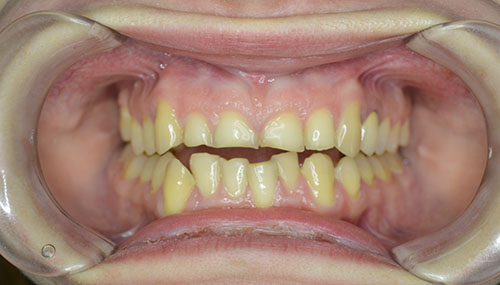BRUXISM AND CLENCHING
Do you have a problem with grinding your teeth?
A good one third of the population has a problem with clenching and grinding of their teeth.
Effects of clenching and grinding are slow but sure and eventually lead to extensive destruction of tooth structure. If unaddressed, these destructive habits can lead to a need for significant oral rehabilitation.
Bruxism is defined as abnormal and excessive grinding of upper and lower teeth causing significant tooth destruction. With eating and normal function, teeth only contact about four minutes a day. However, a bruxer can have teeth coming together for 6-8 hours per day which is usually their sleep period.
Clencher closes teeth and moves teeth only slightly back and forth but with a heavy force. This is associated with significant wear of teeth and prominent facial muscles.
The wear of teeth with bruxism and clenching will continue unless treatment is initiated. Young children grind their teeth but grow out of the habit as their permanent teeth erupt. Extensive wear of teeth can be diagnosed as early as the teen years. Treatments options depend on the degree of wear of teeth.
Treatment options include:
Biteguard is a calibrated piece of plastic fabricated over accurate models of the natural teeth and when worn reduce the ability of upper and lower teeth to make contact. It is effective in treating all stages of wear from grinding and clenching.
It is made of hard plastic to withstand the force of grinding and to offer enough resistance to protect the enamel on the teeth and usually worn at night, when grinding is most severe and also at times of psychological stress.
Most patients grow comfortable with wearing a splint. Splints last for many years before they need to be replaced. A biteguard is the most conservative treatment of choice.
Bite equilibration: When upper and lower teeth are not evenly coming together, sub consciously you grind to eliminate an uneven bite. Bite equilibration is the process of carefully identifying the premature contacts and adjusting them to eliminate the subconscious grinding. Since the adjustment is usually very minimal, the procedure is not harmful to the teeth. Bite splint is then made to stabilize the bite.
When tooth wear is discovered relatively early, the bite equilibration and bite splint can easily remedy and maintain the bite well enough to avoid the more invasive and extensive restorative options.
When extensive wear has taken place, conservative and intermediary treatment options are no longer effective. Extensive and more expensive restorative options are undertaken to rebuild the teeth significantly worn down over time and then protected with a bite guard.
Occasionally, teeth grinding has progressed so far that only the removal of tooth and replacement with a bridge, implant or denture is the only possible treatment. Bruxism and clenching cause irreversible tooth wear and are serious conditions that will not stop by themselves. This abnormal wear of teeth needs to be controlled and managed as early as possible.
If you’re looking for bruxism and/or clenching treatment in Riverside, CA, contact Dental Care of Riverside today!

